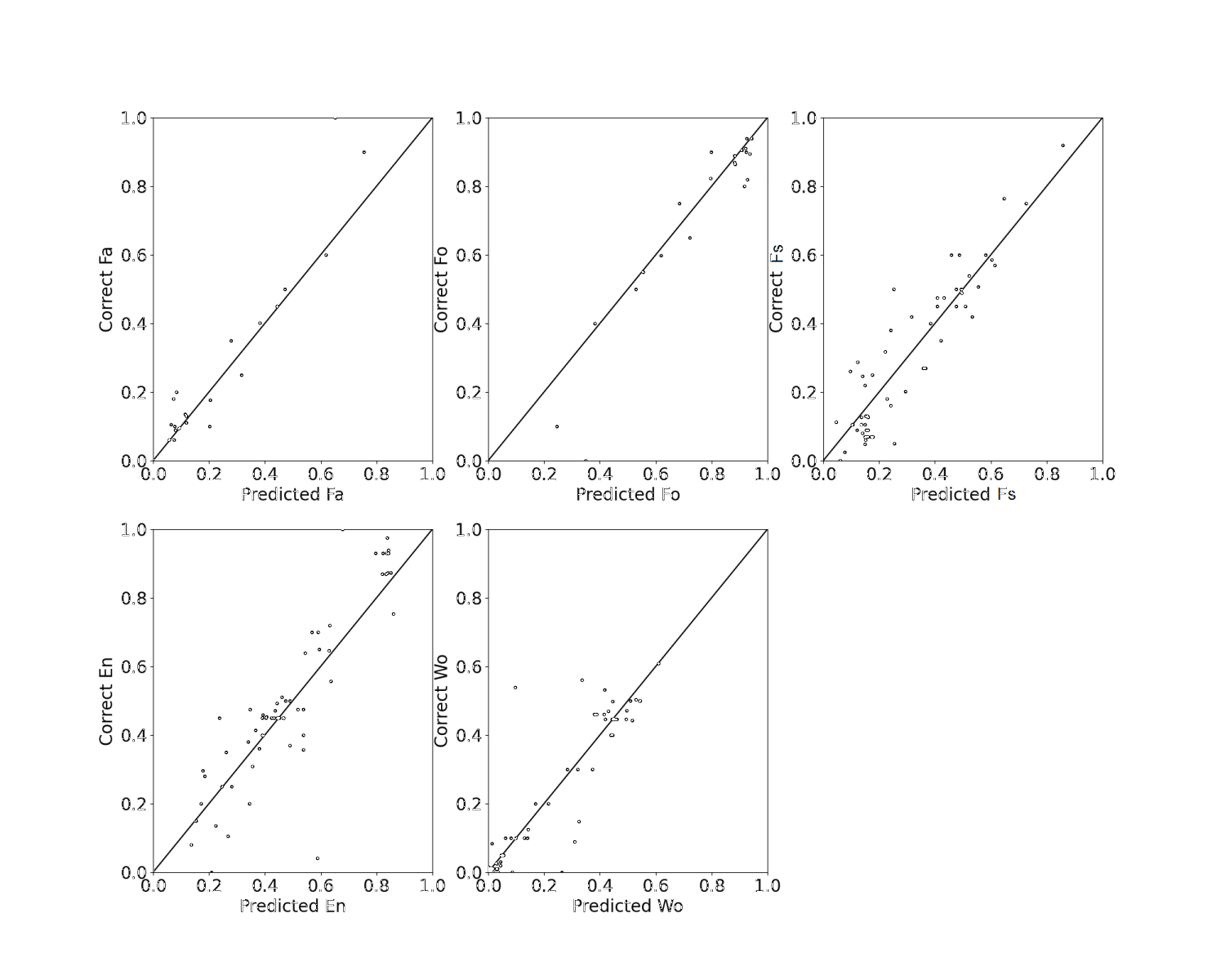- 1University of Helsinki, Faculty of Science, Helsinki University, Finland (david.korda@helsinki.fi)
- 2Institute of Geology of the Czech Academy of Sciences, Prague, Czech Republic
Introduction
The knowledge of asteroid mineral composition is of high importance in planetary science, planetary defense, and in-space resource utilization. So far, mainly quantitative information on asteroid composition is derived by currently-used methods based on ratio of spectral parameters (band depths, band areas, band positions) or on spectral unmixing. These methods are highly sensitive to quality and consistency of input spectral data. In our approach we aim to test of using artificial neural networks (ANNs) for (semi-)quantitative mineralogical analysis of asteroid spectra.
Methods
Artificial neural networks have been developed to solve tasks which are difficult to define by exact mathematical methods and are less sensitive to quality of input data (in our case variation in spectral slope or absolute reflectance values). They are composed of layers of neurons. Each neuron of a layer is non-linearly connected with neurons in the following layer. The non-linearity makes the neural network flexible and enables it to solve various tasks. Neural networks consist of an input layer, any number of hidden layers, and an output layer. We utilize a neural network for determining modal and chemical compositions on the most common minerals presented in meteorites, i.e. olivine, orthopyroxene, clinopyroxene, and plagioclase. We implemented a so-called feed-forward neural network with one hidden layer . The inputs of the neural network are reflectances at different wavelengths. The outputs are modal composition of the observed sample and its chemical composition.
Data
We used measured reflectances from the Relab databse (http://www.planetary.brown.edu/relabdata/). We selected reflectance spektra of olivine and pyroxene which cover the wavelength interval between 350 nm and 2550 nm with a maximum step of 15 nm. These spectra were interpolated into a regular grid with a step of 5 nm. The interpolated spectra represent our input layer.
Results
We applied the neural network on a set of olivine and orthopyroxene spectra. For this setup, we used 30 neurons in the hidden layer and 7 output layers (two for volume percentage of olivine and pyroxene, two and three for description of chemical composition of olivine and pyroxene, respectively). We split the data into two parts and used one of the parts for training the neural network. The results were evaluated on the other part. The results are shown in Fig. 1. The vertical axes show the correct (published) values while the horizontal axes the values predicted by the neural network.

Figure 1: Results of chemical abundances of olivines (top left and top middle panels) and pyroxenes
(other panels).
Discussion
Except a few outliers, the predicted values are within about 10% from the correct values. The outliers might be caused either by limited number of training samples or ambiguously determined “correct” values. However, the preliminary results are promising. In the near future, the prediction power of our neural network will be improved with more optimized architecture and increasing number of training samples.
How to cite: Korda, D., Kohout, T., Penttilä, A., and Klami, A.: Neural network for processing of asteroid spectra, Europlanet Science Congress 2021, online, 13–24 Sep 2021, EPSC2021-767, https://doi.org/10.5194/epsc2021-767, 2021.

